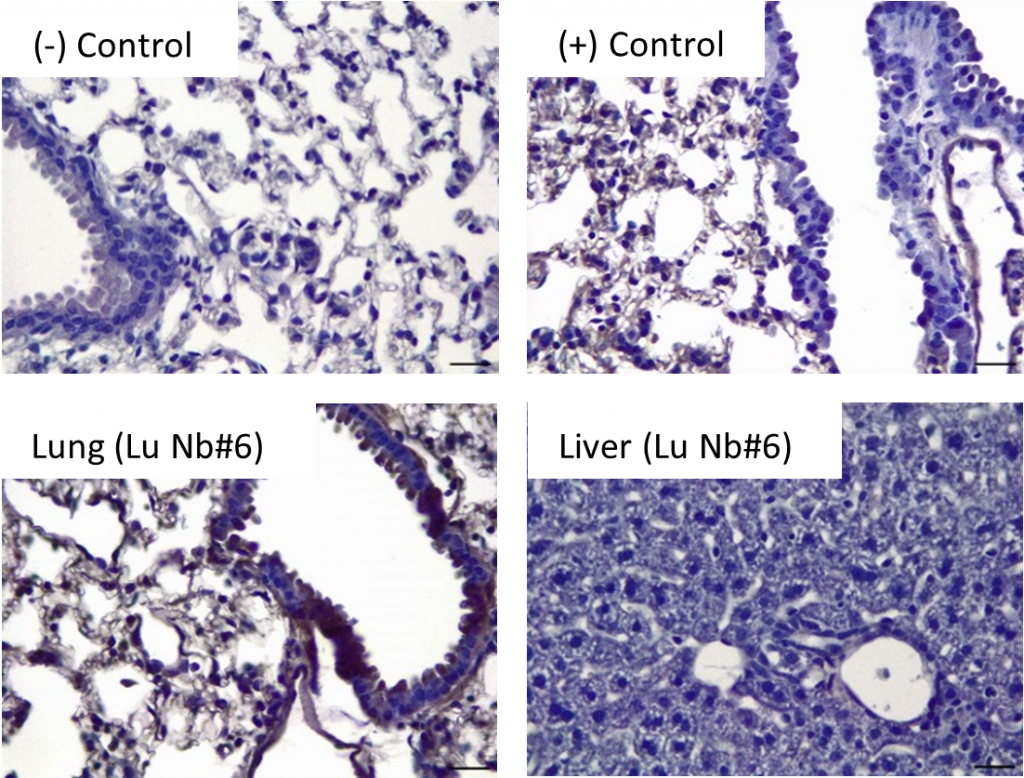Lung-Targeting Nanobodies and Purification Methods
A new approach for combating infectious disease at lower dose frequencies and amounts by directly delivering enhanced potency therapeutics

localization and specificity within the lung tissue
The combination of high-throughput screening, functional validation assays and sophisticated bioinformatic tools to develop highly potent, neutralizing antibodies has generated novel avenues for designing effective medical countermeasures against a range of diseases and infections. Although the discovery pipeline of therapeutic antibodies has evolved to be increasingly rapid, there are a variety existing hurdles that have not yet been addressed in
the field of antibody design. Notably the cost of design and production, stability, and serum half life – all of which can lead to the need for larger, more frequent doses, and increased financial burden on drug companies to generate large quantities efficiently.
Sandia researchers recently employed their proprietary nanobody (VHH) Phage library and biopanning pipeline to identify novel tissue targeting nanobodies. These small tissue-targeting
moieties can be attached to a given antibody or nanoparticle to achieve targeted delivery of a drug to the desired tissue or reservoir of infection namely for respiratory illnesses of the lung. The ability to deliver therapeutics directly to the affected tissue can decrease the size and frequency of dosing and improve therapeutic outcomes by virtue of this targeted approach, thereby reducing the financial challenges of producing large quantities rapidly.
- Highly diverse nanobody phage library has been successfully applied to identifying novel pathogen neutralizing nanobodies; it is now providing novel lung-targeting nanobodies
- Can be used in a modular fashion to generate multifaceted engineered antibodies with tissue specificity as well as pathogen binding capabilities
- Provides enhanced anti-viral specificity as well as pathogen binding capabilities
- Provides enhanced anti-viral potency for a given tissue or reservoir of infection (e.g. SARS-CoV-2 Ab targeted to the lung) and reduce the amount/dose needed for efficacy
- Immunology
- Biomedical engineering
- Cancer
SD 15930
Published3/22/2024
Last Updated1/15/2025